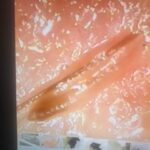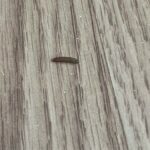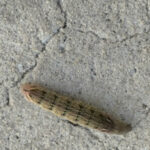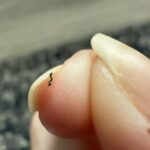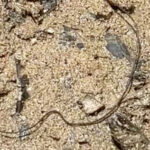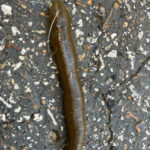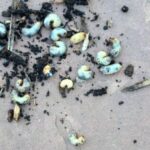If you have stored your clean clothes away in a storage bin and you opened it only to find worms in the bottom of the bin or on your clothes, there are several solutions to the problem. But first, bravo for storing clean clothes instead of dirty ones. Worms, specifically the case-bearing clothes moth (Tinea pellionela) and its larvae, prefer to feed on (and live in) dirty fabrics. Once you have discovered the worms in the bin or on your clothes, unpack your clothes (preferably outdoors to prevent the larvae or moths from migrating to other parts of the area), and examine them for holes, moths, or larvae. If you don’t notice any creatures and your clothes are intact, have them dry cleaned immediately and clean the bin thoroughly with soap and hot water. If you notice any creatures and holes, the next decision is up to you. You can either discard the clothing and the bin to be 100% sure all larvae and moths are removed or you can remove any visible creatures from the fabric and the bin, and have your clothes repaired and dry-cleaned immediately. Continue reading to find out more about the case-bearing clothes moth, its larvae, and ways to prevent and control infestations.
About the Larvae of the Case-Bearing Clothes Moth
The larvae of a case-bearing clothes moth look like worms and they are white in color. They carry around a “case” that can reach up to 10 mm in length — a case that’s usually made from a combination of self-made silk and the very materials they feed on. While the larvae consumes a hearty diet of dried plant and animal material outdoors, they also feed on carpets, clothing, and general debris in the household as well as dried cereal and vegetable matter. They are likely to feed on wool and cotton, but rarely will they feed on nylon, acrylic, or polyester. In fact, they prefer not to gnaw on any type of synthetic fiber.
The larvae or caterpillars of the case-bearing clothes moth are among the few insects that have the ability to digest the keratin of feathers and hairs. It’s insatiable appetite for fabric, cereal and plant and vegetable matter make the case-bearing clothes moth larvae a serious household pest. Because of this, it is important to get rid of them before your home becomes infested. There are many ways to prevent and kill case-bearing clothes moth and its larvae.
If you notice a worm-like bug with a shell crawling along your walls or anywhere on the ground, chances it’s the larvae of the case-bearing clothes moth and there are plenty more where that one came from. To inspect for damage, which is a good indication of an infestation, begin by checking your cupboards, drawers, wardrobes, and storage areas. You should also inspect your carpeting (especially undisturbed areas), behind and under furniture, and in stored linen, such as in the linen closet.
After inspection, if you notice damage, holes or larvae, there are several ways to kill them. Insecticides such as Insect Guard are effective as well as pesticide free clothes moth traps. There are also al number of sprays available that can be used in carpet and around furniture to kill and/or repel the clothes moth and its larvae. Visit any local hardware store to find the best spray or call an exterminator for professional treatment.
The following tips should help to prevent a case-bearing clothes moth infestation.
- Dry-clean or launder woolens and other susceptible fabrics before storing. The case-bearing clothes moth prefers dirty fabrics, such as fabrics soaked in perspiration and urine. Cleaning these fabrics before storing actually kills any eggs and larvae that may be present. Once cleaned, seal all clothing in plastic. The moth cannot penetrate plastic.
- Susceptible fibers may also be treated with special mothproofing liquids, so speak with your local dry cleaner about options.
- If at all possible, purchase carpets and furniture made from synthetic fibers and be sure to keep them clean.
- Inspect roof spaces to make sure there are no bird nests present. Bird nests are perfect places for moths to hide and lay their eggs.
- Vacuuming works wonders, so be sure to keep your carpets vacuumed at all times. Vacuuming helps to remove debris that can actually support future infestations. Vacuum dark areas and underneath furniture where larvae like to feed and moths are likely to hide away from the light. Dispose of the contents of the vacuum bag immediately.
- Freeze-treatment is also an effective way to kill eggs. If you have small objects that can fit into a zip lock bag, simply place the item in the bag and freeze it for a week to kill larvae and eggs. After a week, clean the objects thoroughly.
Good Luck!
All About Worms is always free, always reader-supported. Your tips via CashApp, Venmo, or Paypal are appreciated! Receipts will come from ISIPP Publishing.



